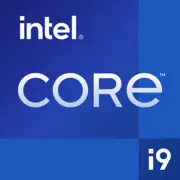Intel Core i9-13905H

インテル Core i9-13905H: モバイル向けのRaptor Lakeのパワー
2025年3月
インテルの第13世代ノートブックプロセッサー、コードネームRaptor Lakeは、パフォーマンスとエネルギー効率のバランスで驚きを提供し続けています。その中でも、最高級のノートブック向けチップであるCore i9-13905Hは、14コア、最新の標準サポート、統合グラフィックスを備えています。このCPUが誰に適しているのか、どのような能力を持ち、競合と比較してどのように見えるのかを探ります。
1. アーキテクチャとプロセス: ハイブリッドアプローチと新技術
ハイブリッドコア構造
Core i9-13905HはハイブリッドアーキテクチャRaptor Lakeに基づいており、コアを2つのグループに分けています:
- 6つの高性能Pコア(Performance)、ハイパースレッディングをサポート(12スレッド)。
- 8つの高効率Eコア(Efficiency)、マルチスレッディングはなし。
合計で14コアと20スレッドです。Pコアの基本周波数は2.4 GHz、ターボモード時の最大周波数は5.2 GHzです。Eコアは3.9 GHzまで動作します。このアプローチにより、タスクを効果的に分配できます:重いアプリケーション(たとえばレンダリング)はPコアを用い、バックグラウンドプロセス(更新、ストリーミング)はEコアに振り分けられます。
インテル7プロセス
チップはインテル7(10nm Enhanced SuperFin)基準で製造されており、トランジスタの高密度と前の世代と比べて改善されたエネルギー効率を提供します。第3レベルキャッシュ(L3)は24MBに増加しており、マルチスレッドのシナリオでのデータ処理を高速化しています。
統合グラフィックスインテル Iris Xe
内蔵GPU Iris Xe(96 EU)は以下をサポートしています:
- 4Kディスプレイ、最大120Hzのリフレッシュレート。
- レイトレーシング技術(ハードウェアによるレイトレーシングアクセラレーション)。
- AV1、HEVCのエンコーディング/デコーディングフォーマット。
低設定のゲームでは、Iris XeはCS:GO(90-100 FPS)、Dota 2(60-70 FPS)に対応しますが、Cyberpunk 2077のようなAAAタイトルには独立したグラフィックカードが必要です。
2. TDPと電力管理
プロセッサーの定格TDPは45Wですが、ターボモードでは瞬時に95Wに達することがあります。これには先進的な冷却システムが必要です:コンパクトなウルトラブックではこのCPUは過熱するため、主にゲーミングノートブックやモバイルワークステーションで、大型のヒートシンクと複数のファンを備えています。
省エネ技術:
- インテル ダイナミックチューニング 2.0 — 負荷に応じて自動的に電力を調整。
- スピードシフト — 遅延を減らすため、周波数を瞬時に切り替え。
- アダプティクス — パフォーマンスとバッテリー寿命のバランスを取るために専用ソフトウェアで設定を最適化。
3. パフォーマンス: テストと実際のタスク
オフィス作業とマルチメディア
- Google Chromeを20以上のタブ+Photoshop+Discordでのストリーミング — プロセッサは40-60%使用、温度は65°C前後。
- Premiere Proでの4Kビデオレンダリング:10分の映像が8-9分で処理(Core i7-12700Hでは12分かかる)。
ゲーム
独立GPU RTX 4070(ASUS ROG Zephyrus M16)と組み合わせて:
- Cyberpunk 2077(Ultra、DLSS Quality) — 75-80 FPS;
- Hogwarts Legacy(High) — 90-100 FPS。
ターボモード:
Pコアは5.2 GHzまでオーバークロックされますが、これは2-3分間だけです。その後、周波数は4.6-4.8 GHzに安定し、過熱を防ぎます。この時、ファンの騒音は目立つ(最大45 dB)になります。
4. 使用シナリオ: 誰にi9-13905Hが必要か?
- プロフェッショナル: ビデオエンジニア、3Dデザイナー、プログラマー(大規模プロジェクトの構築)。
- ゲーマー: 1440pまたは4Kで高FPSでプレイしたい人。
- エンスージアスト: 将来の「余力」が大切なユーザー。
日常的なタスク(ウェブサーフィンやオフィス作業)にはCore i9は過剰であり、Core i5で十分です。しかし、もしあなたがLightroomで写真編集を行いながら、ビデオ編集をするのであれば、このCPUはその役割を果たすでしょう。
5. バッテリー寿命: ノートパソコンはどれくらい持つか?
省電力モード(Windows Battery Saver + 輝度50%)で:
- YouTube視聴 — 最大6時間。
- Google Docsでの作業 — 最大7時間。
アクティブな負荷(ゲーム、レンダリング)時に80W·hのバッテリーを搭載したノートパソコンは、1.5-2時間でバッテリーが切れます。
アドバイス: バッテリーが90W·h以上で、急速充電に対応したモデルを選びましょう(例: MSI Creator Z17 — 99.9W·h)。
6. 競合他社との比較
AMD Ryzen 9 7940HS
- 長所: マルチスレッド性能が高い(24スレッド)、冷却性能が優れている。
- 短所: シングルスレッドタスクでは劣る(Geekbench 6 シングルコア — 1720)。
Apple M3 Max
- 長所: 最高のバッテリー寿命(最大20時間)、エコシステムとの統合。
- 短所: Windowsソフトとの互換性が限られている、価格(ノートパソコンは$3500から)。
Intel Core i7-13700H
- 下位モデル: 14コア(6P+8E)、しかし周波数は低い(最大5.0 GHz)。価格差は$200-300。
7. Core i9-13905Hの長所と短所
強み:
- クラス最高のシングルスレッドパフォーマンス。
- DDR5-5600とPCIe 5.0をサポート。
- 創造的作業に最適化。
弱み:
- 負荷時の高熱。
- このCPUを搭載したノートパソコンは2.5 kg未満のものは稀。
- 価格: 装置は$1800からスタート。
8. ノートパソコン選びの推奨
- ゲーミングモデル: ASUS ROG Strix Scar 16(価格: $2200から)、MSI Raider GE78($2400から)。
- ワークステーション: Dell XPS 17($2500から)、Lenovo ThinkPad P1 Gen 6($2800から)。
注目すべき点:
- 冷却システム: 最低でも2つのファン、銅製ヒートパイプ。
- 画面: プロ向けには100% DCI-P3の4K、ゲーマー向けには240HzのQHD。
- ポート: 外部ストレージやモニターと接続するためにThunderbolt 4は必須。
9. 最終結論
Core i9-13905Hは、モバイル形式での最高のパフォーマンスを求める人の選択です。以下の人々に適しています:
- ゲーマー: 4KでのFPSを犠牲にしたくない人。
- クリエイター: 「重い」エディターを使用する人。
- エンジニア: シミュレーションやCADモデルを実行する人。
代替案:
- バッテリー寿命がパフォーマンスより重要であれば、Apple M3 Proを考慮してください。
- 予算を抑えたいなら、Core i7-13700HやRyzen 9 7940HSが良い選択です。
i9-13905Hを搭載したノートパソコンは、今後3-4年間のパフォーマンスへの投資です。しかし、妥協に備えなければならないこともあります:重量、騒音、価格が彼らの弱点です。
基本
CPUの仕様
メモリ仕様
GPUの仕様
その他
ベンチマーク
他のCPUとの比較
ソーシャルメディアで共有する
または当サイトへのリンクを追加
<a href="https://cputronic.com/ja/cpu/intel-core-i9-13905h" target="_blank">Intel Core i9-13905H</a>